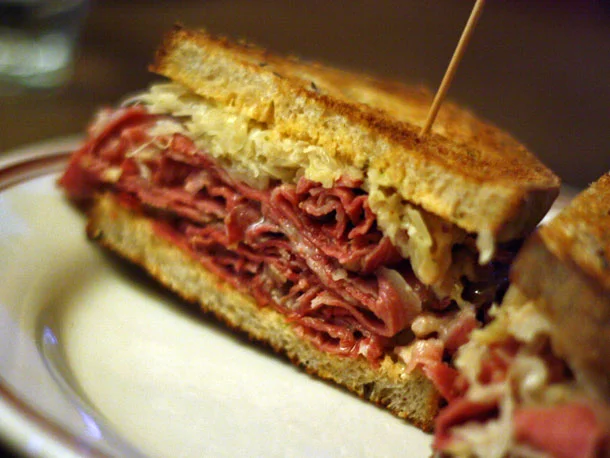Read the following sentences:
1. The taste of blood
2. The metallic taste of blood
1. I have just returned from three weeks in New York, where I visited restaurants and museums.
2. I have just returned from three weeks in New York and my head is filled with art exhibits, subway stops, the Frank Gehry building in Chelsea, a Horton Foote play, corned beef sandwiches, sidewalks, and the Hudson River. (from Natalie Goldberg's The Great Spring)
1. The tree shed its leaves in a pile.
2. The ponderosa pine shed its tan needles, a pile of pickup sticks underneath its canopy.
Which of the two sentences had more energy? # 2's, right? The difference is in the detail. Detail is concrete. It paints a more vivid picture of what you're attempting to describe for your reader. What do I mean by detail? First: be specific. Not tree, but ponderosa. Not sandwiches, but corned beef. Also, write the multi-dimensional experience. If you're writing a scene where characters are speaking, describe what's going on around them. What's the weather doing? What sounds are happening in the background? What smells fill their nostrils?
How do we teach ourselves to write with more specific detail?
- Train your writing muscle. What's the saying? Practice makes perfect. Just like an ice skater practices a triple toe loop over and over, we must train our detail writing muscles. After some time, we'll accomplish it without thinking. Here's an exercise to get you started, one of Natalie Goldberg's go-to prompts in her books about writing. Set a timer for ten minutes. Write what's in front of you. If you're writing at your kitchen island, write about the pyramid of Play-Doh containers, the abandoned breakfast plates empty except for a small puddle of maple syrup and a single crust of french toast, the glass planter holding mint green air plants. Another version of this prompt, which encourages writing with senses beyond visual: write what's happening around you. Include the music playing (the specific song or genre), the sound and smell of the food cooking (sauteed morel mushrooms sizzling in the cast iron pan), the texture of the table (pitted, marked, wooden).
- Read authors who write with detail. It will rub off on your writing. In his series of six autobiographical novels, My Struggle, the Norwegian author Karl Ove Knausgaard, is masterful in the way he writes with detail. (You're going to hear a lot from me about Knausgaard in this blog, by the way...)
The workmen gathering in cafes and bakeries for breakfast at half past six, with their protective boots and strong, grimy hands, their folding rulers tucked into trouser pockets and their constantly ringing mobile phones. (From Book 1)
- Incorporate language that evokes the senses in your writing. Taste, touch, smell, sound, sight. Another exercise: mindfully eat the food in front of you. Go slow, allowing the taste, the texture, the sound of the food fill you. Then write for five minutes about what you just experienced. Start with a food that's simple - an apple, a chocolate chip cookie. Now approach your writing with the same mindfulness to detail.
